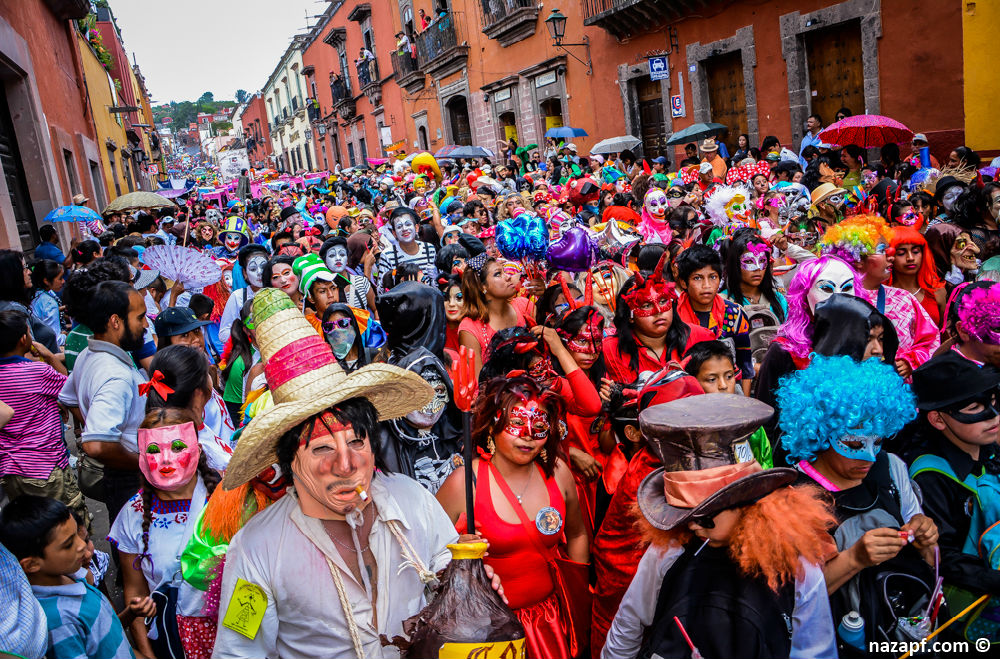The traditional Convite de Locos originates from an ancient dance carried out by local farmers, which was danced on the holidays in honor of San Isidro Labrador and San Pascual Bailón, in which scarecrow dresses began to be included as part of the celebration.
This tradition changed in the 19th century when the dance began to include colorful clown costumes with disguises and cardboard or wooden masks.
Currently, the costumes are as varied as the imagination allows and they are danced for various festivities, the most important being the “Convite de Locos” in honor of San Antonio de Padua.
San Miguel de Allende, one of the most important tourist destinations in the country, celebrated its Convité de Locos on Sunday, June 16th, a party in honor of 𝑺𝒂𝒏 𝑨𝒏𝒕𝒐𝒏𝒊𝒐 𝒅𝒆 𝑷𝒂𝒅𝒖𝒂, the people of San Miguel dress in groups of different clothes, costumes and masks to walk the streets of the city.
The Convité de Locos brings together tourists and locals who crowd the streets to see the crazy customes pass by. The tour started at the exit to Celaya, passing through Ancha de San Antonio, Zacateros, Canal, Hernández Macías, Insurgentes, Pepe Llanos, Mesones, Núñez, San Francisco until reaching the Main Garden, the place where this festivity concluded, which has been framed as one of the most important in the region.
San Miguel de Allende nos sorprende con Festividades como el Convite de Locos.✨
— Latinamerica Meetings (@meetlam_) June 15, 2024
¡Si quieres conocer más! Da clic aquí 👉 https://t.co/uP4nDbdyRu#LMelPuntodeEncuentro #sanmigueldeallende #guanajuato #cultura #experiencias #destinos #eventos pic.twitter.com/D05bAybjpu
There were estimated to be around 10 thousand participants in the parade with different costumes, including clowns, harlequins, women, famous people, and around 90 thousand people distributed among all the streets of the parade, which means a record attendance.
The Secretariat of Citizen Security (SSC) deployed an operation with more than 150 elements on foot, in addition to the use of patrol vehicles, with prevention and surveillance tours.
Following the strategy implemented last year, nine hydration stations were placed along the entire route; while, for people with reduced mobility, a Preferential Zone was established on Hernández Macías street, outside the “El Nigromante” cultural center.
San Miguel Times
Newsroom

